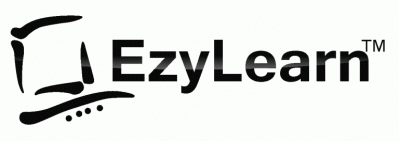The Business Activity Statement finalises the accounting side of a business every month or quarter and includes income and expenses as well as liabilities and assets.
This course comes after the Daily Transaction and Credit Management Course and the End of Month Bank Reconciliation Course.
It’s the final step which reveals the taxes and amounts owed by the business as well as obligations and liabilities which relate to payroll and superannuation.

BAS & Financial Reporting Course Summary
Our Xero GST, Reporting & BAS Training Course builds on our Xero Bank Reconciliation Course.
It explores a full quarter worth of transactions using a case study which features a budding entrepreneur, Jerry Lame – see below.
We’ve chosen this case study because it enables us to include a bunch of transactions that make GST and BAS reporting tricky; including:
- purchases which are GST-free,
- those which have partial GST, or are
- international payments.
Varying GST Transactions
It includes capital purchases (a vehicle) and how the
- different costs of running a vehicle should be treated, as well as
- expenses like entertainment; when FBT applies and
- an introduction to Payroll where you’ll explore how various aspects of wages are treated in the BAS.
BAS Report and PAYG Introduction
After correctly coding all of these transactions, we set up the Financial Settings of a Business in Xero with regard to the GST registration (Cash vs Accrual and quarterly vs monthly).

You’ll run a BAS report, which is combined with our specially-designed “Ad Hoc Payroll” Excel spreadsheet case study calculations in order to work out the final payroll liabilities.
For Micro & Small Businesses you can use other tools like Excel Spreadsheets to perform calculations of obligations like PAYG and then enter the transaction into your accounting software.
As you progress through this course you’ll see the results of the business owners ‘change of strategy’ and focus for the business.
You’ll see what these results look like at the end of the quarter, as well as month-by-month comparisons of Profit and Loss and Balance Sheet reports.

Decisions Based on Financial Reports
At the end of the course you’ll explore how the business owner can use the information in the reports to change the direction of the business.
You’ll learn how he can configure the software to obtain even better reports at the end of the next quarterly reporting period.
Apart from performing all of a businesses compliance requirements, decision making is one of the biggest reasons for business to maintain detailed records and use computerised accounting software.
GST, BAS and Financial Reporting Summary Listing
These topics are covered in the GST, BAS and End of Quarter Financial Reporting Course:
- Legislative, regulatory, industry and organisational requirements
- Tax obligations
- Australian Taxation Office (ATO)
- The cash system
- The accrual system
- Managing transactions for more than one business
- Company tax
- Asset purchases
- Income tax legislation
- The use of IT software and equipment
- Organisational and industry requirements
- National Tax Practitioners board requirements
- Code of professional conduct
- Conduct of personal vs business affairs
- Ascertaining a client’s state of affairs
- Ensuring tax laws applied correctly
- Taxation laws
- Financial Reporting / Outcomes
- BAS agent services
- Tax agents
- Accessing information
- GST reports
- Superannuation levy
- Governing bodies
- Corporations legislation
- Record keeping
- Policy and procedure
- GST principles
- Adjustments
- Calculating GST
- Registered for GST
- Registered for ABN
- Not registered for GST
- Entering cash transactions
- Processing accounting data
- Reconciliations
- Calculating and reconciling total salaries
- Calculating pay as you go instalments
- Amounts withheld
- PAYG systems instalments and records
- PAYG tax withheld
- Fringe benefits tax (FBT)
Back to Online Bookkeeping Courses
The Messy Startup Case Study

Jerry leaves the corporate world to start multiple businesses and leaves a trail of messy transactions which affect every aspect of a business bookkeeping, including assets, liabilities, income and expenses.
You’ll work with 3 months of bank statements and transaction data and perform catchup bookkeeping for Jerry’s business so that he is compliant and his information is accurate.
You’ll run some financial reports for Jerry and explore business decisions he needs to make in the following quarter.
Discover the practical bookkeeping course case study that is used to teach you how to perform these tasks using
- QuickBooks,
- MYOB and
- Xero
See what is included in the case study: Jerry’s Messy Startup
Back to Office Admin Training and Business Admin Course Case Studies


 We work remotely from home and we’d like to help you.
We work remotely from home and we’d like to help you.